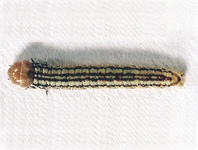Abstract
The annelid genus Heterochaeta, with the single species H. costata, was first described from the marine littoral near Cherbourg, Normandy in France, by Claparède (1863). Although sexually immature, the worms can obviously be distinguished from all other marine tubificids by the peculiar palmate shape of the dorsal chaetae (erroneously interpreted as bowl-like by Claparède) in segments V–XIII while all other chaetae are bifid. The presence of two widely divergent kinds of short chaetae (long hair-like chaetae are lacking in this species) is reflected in the genus name Heterochaeta. Palmate dorsal chaetae with a broad comb-like ("costate") distal end occur in a few freshwater tubificids (Brinkhurst 1971). Among marine tubificids, only Tubifex thompsoni Southern, 1909 possesses a set of chaetae identical to that in H. costata but combined with strangely different (aberrant?) male ducts and penial chaetae; that species was never found after its original description by Southern (1909) and was therefore regarded as a synonym of the latter taxon by the more recent authors (Brinkhurst 1971). The palmate portion of chaetae in H. costata is actually not bowl-like but only slightly concave, spoon-like. Furthermore, some bifid dorsal chaetae in the neighbouring segments can display short intermediate denticles, being thus pectinate. These characters were established by Benham (1891) who also described the reproductive organs of this species.

